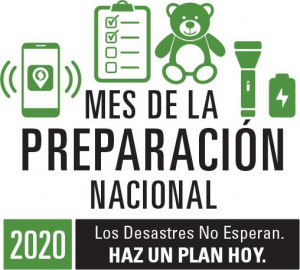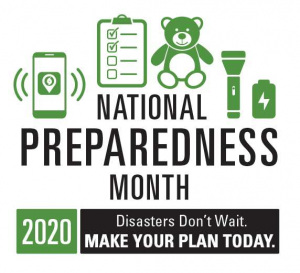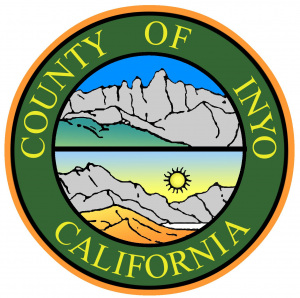


National Preparedness Month is recognized each September to promote family and community disaster and emergency planning now and throughout the year. The 2020 National Preparedness Month theme is:
“Disasters Don’t wait. MAKE YOUR PLAN TODAY!”
As our nation continues to respond to COVID-19, and as California struggles to contain its wildfires, there is no better time to be involved this September.
Week #3 focuses on PREPARING FOR DISASTERS. Planning and preparing can limit the impacts that disasters and emergencies have on you and your family. Preparing NOW will give you peace of mind and, in the event of an emergency or disaster, will ensure you can begin the recovery process without delay.
Things you should know and/or do before a disaster or emergency strikes:
- Purchase/renew/review your insurance coverage-Make sure it is enough to replace your property. Does it include coverage for flood and earthquake damage? Many policies do not.
- Become educated about your personal finances-Your financial obligations will continue after a disaster. Try to set a few dollars aside each month in an “emergency savings” account.
- Take time to gather and secure important personal, household, medical, financial and insurance information and records-You may only have minutes to evacuate. Be sure these documents and information are readily accessible.
- Install smoke, carbon monoxide and natural gas alarms-Test them monthly.
- Learn when and how to shut off the utilities to your home-Have a wrench and pliers handy.
- Prepare 100 feet of adequate defensible space around your house and property-This provides firefighters with a buffer zone to help protect your home during a wildfire.
- Create a wildfire resistant zone that is free of leaves, debris, or flammable materials for at least 30 feet from your home-Use fire-resistant materials to build, renovate or make repairs. When landscaping around your home, choose plants that are harder to ignite, generate less heat when burning and produce shorter flames.
- Create an earthquake safe home-Secure tall furniture to walls. Don’t hang heavy objects above beds, sofas or sitting areas.
- Introduce yourself to your neighbors-Create a support team for each other.
- Learn CPR (Cardiopulmonary Resuscitation) and Basic First Aid.
- Prepare a family EMERGENCY KIT -You may be evacuated or isolated for several days.
- Pay attention to alerts and warnings-Sign up for CodeRED at https://www.inyocounty.us/services/sheriff
- Know your evacuation route-Find several ways to leave the area. Keep a local map in your car and in your emergency kit. Practice evacuating your family twice per year. Have a plan for pets and livestock.
- Evacuate immediately if authorities tell you to do so-If trapped call 911 to provide your location. Emergency response may be delayed, overwhelmed or impossible. Always be prepared with an alternative plan….DON’T WAIT!
- Initiate your FAMILY EMERGENCY COMMUNICATION PLAN-Contact your family members to reunite or let them know you are ok and where you are.
- Listen to authorities for information and instructions for returning home-Know when it is safe enough to return to your home. If damage has occurred at and around your home, ask if the water is safe to drink. Always wear protective clothing and take measures to limit your exposure to toxins.
For more information and resources on how you can become a better prepared member of the community go to https://www.ready.gov/september or contact the Inyo County Office of Emergency Services at (760) 878-0120






